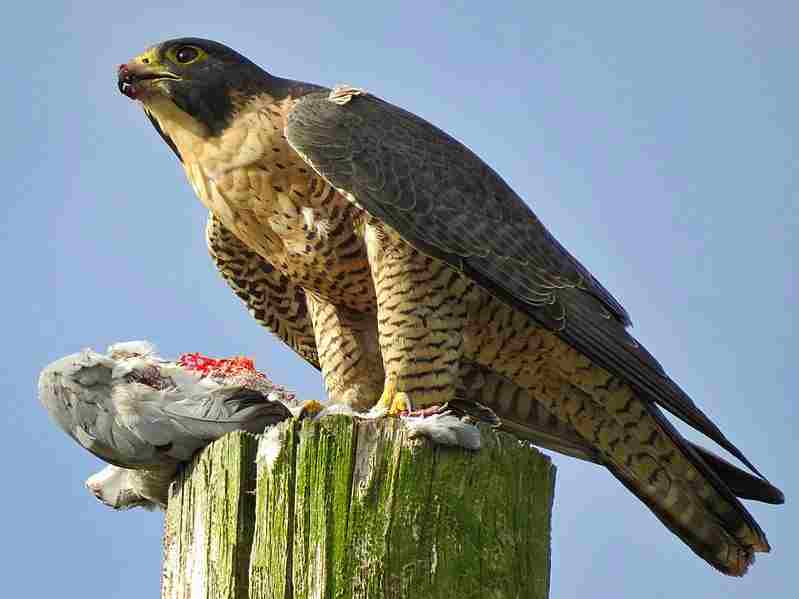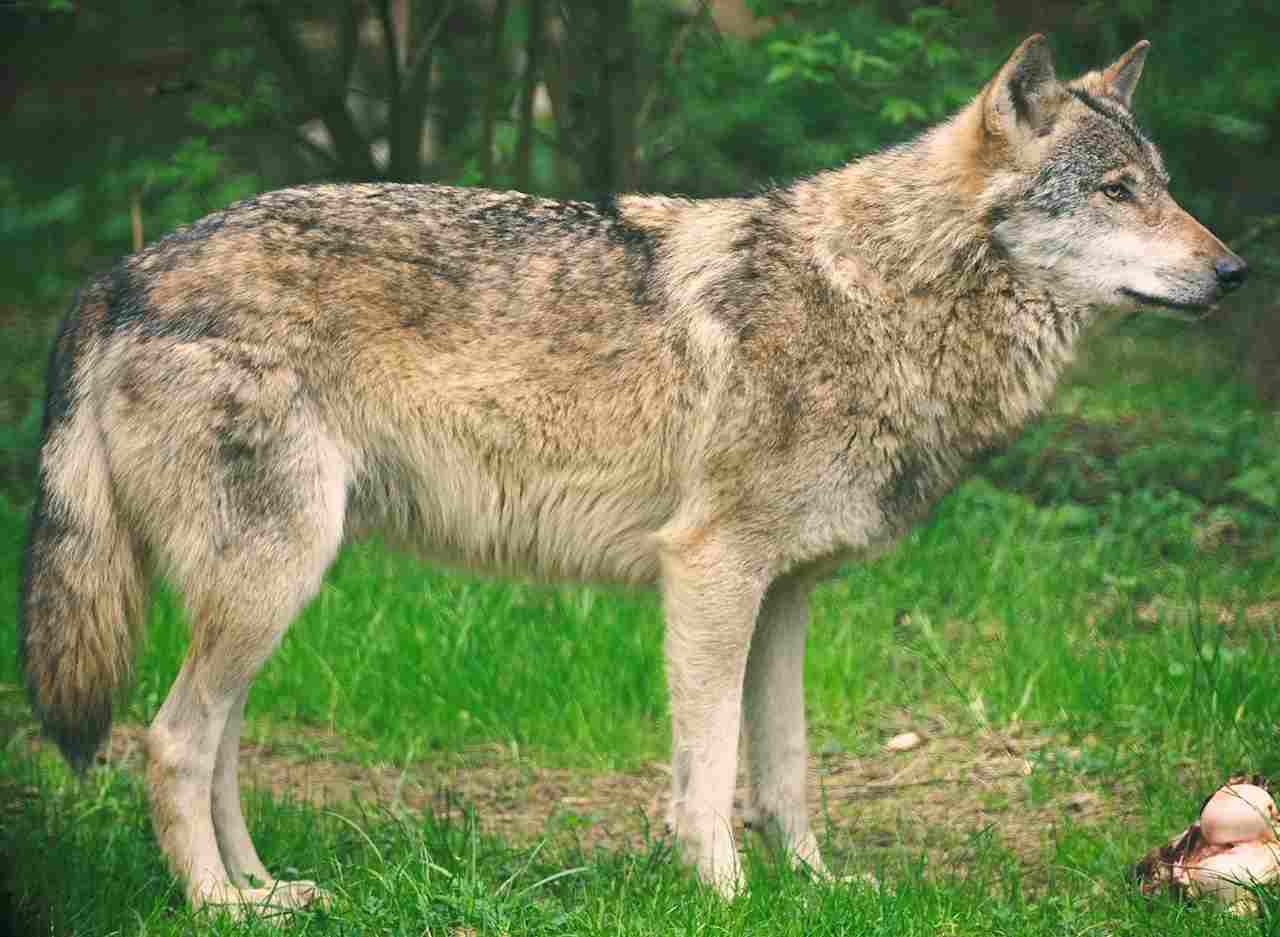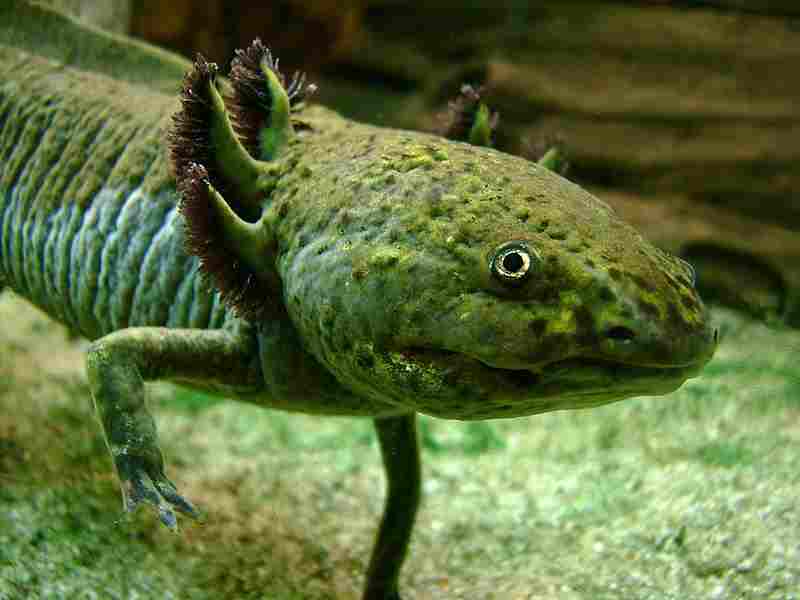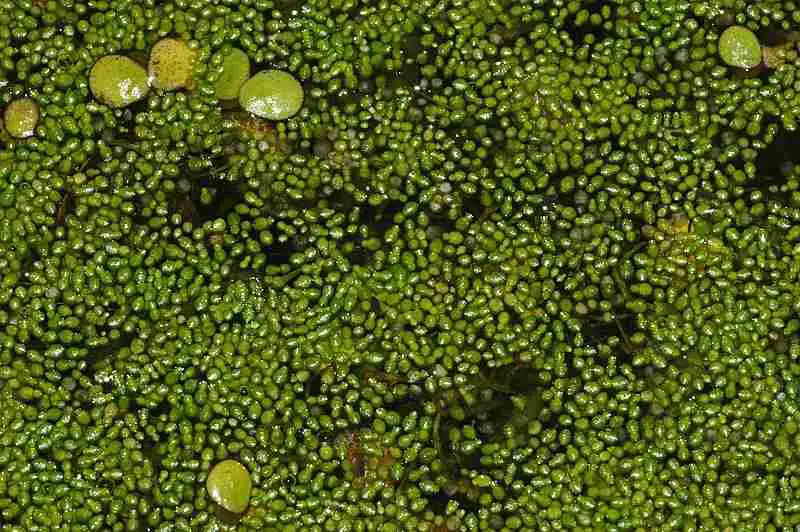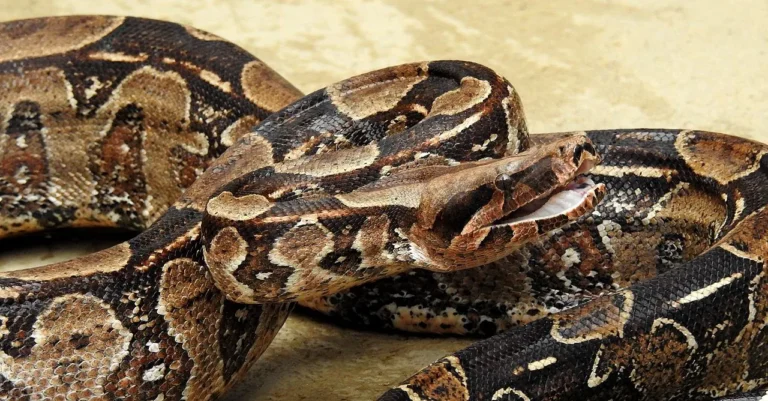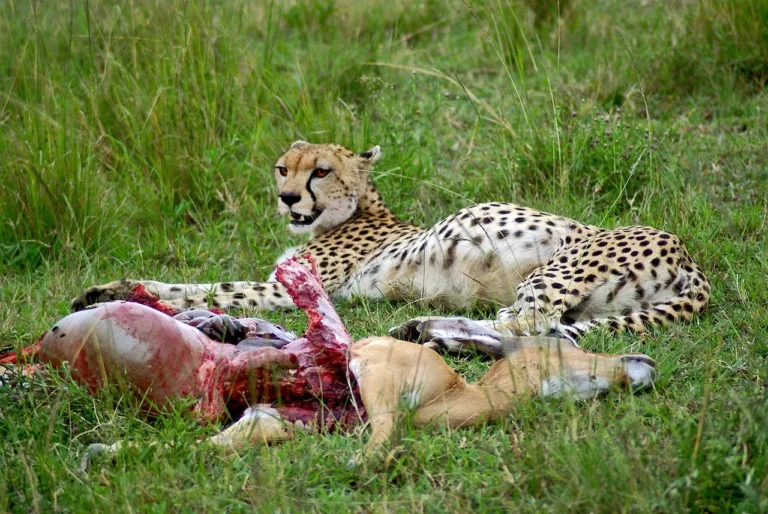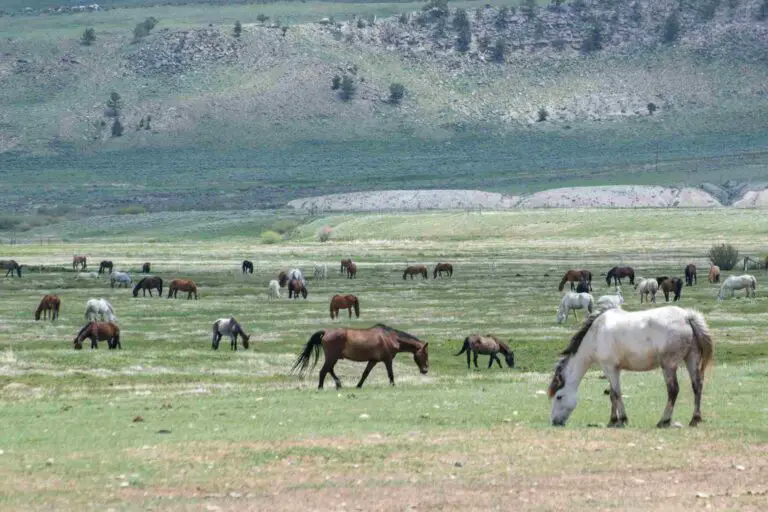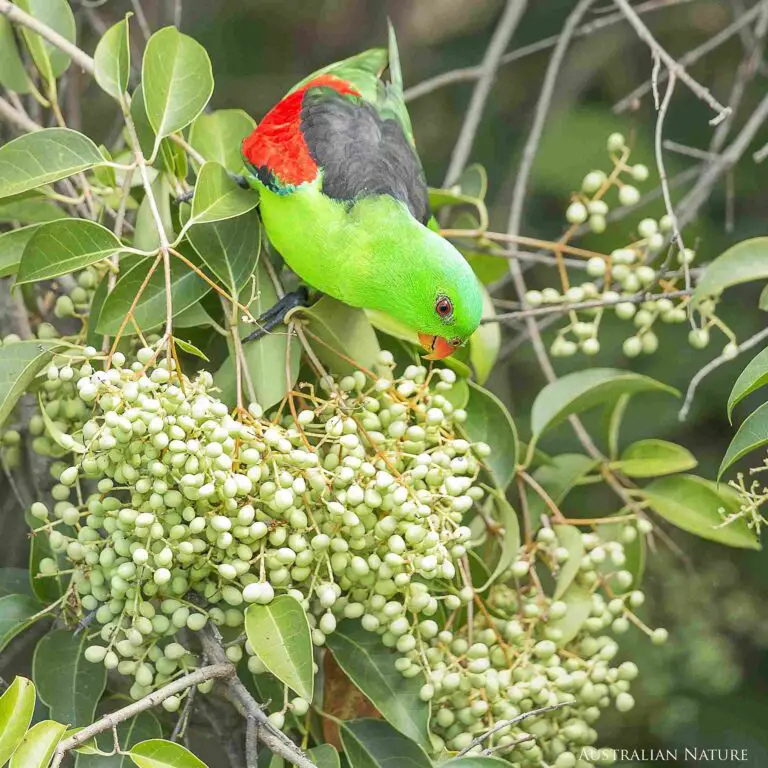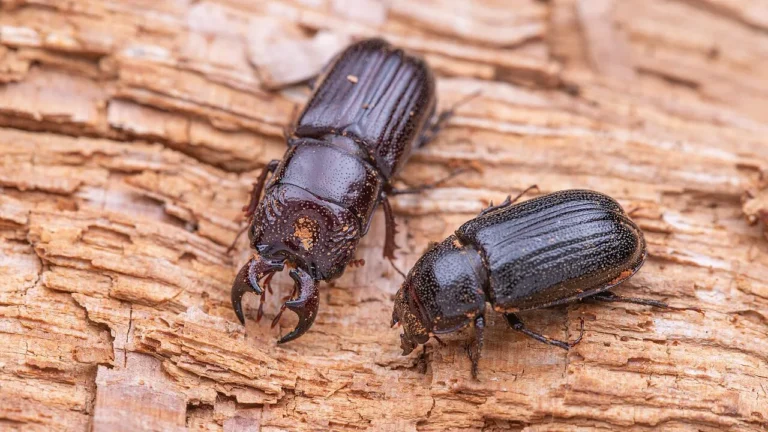What is a Quaternary Consumer? An Overview
A quaternary consumer is a heterotrophic organism that occupies the ultimate apex of the food chain or energy pyramid in an ecosystem.
This article defines quaternary consumers, gives some examples of these organisms, and reveals their feeding behavior(s) or preferences.
Quaternary Consumer Definition
1) The highest-level heterotroph in an ecosystem
A quaternary consumer is the highest-level heterotroph in an ecosystem. It occupies the ultimate apex of the food chain or energy pyramid, feeding on organisms from lower trophic levels. These consumers are typically large predators that play a crucial role in regulating the population of other organisms within their habitat.
2) Apex predator in ecosystems with five trophic levels
In ecosystems with five trophic levels, the quaternary consumer is considered the apex predator. It sits at the top of the food chain, preying on organisms from lower trophic levels, including tertiary consumers. As an apex predator, the quaternary consumer has no natural predators of its own and plays a vital role in maintaining the balance and stability of the ecosystem.
3) Consumers in trophic level 5 of the food chain
Quaternary consumers are classified as organisms in trophic level 5 of the food chain. They are positioned above the primary, secondary, and tertiary consumers, and are characterized by their ability to prey on all lower animals within their habitat. These consumers obtain their energy by consuming other organisms, which may include herbivores, carnivores, or omnivores.
4) Animals that can prey on all lower animals in their habitat, including tertiary consumers
Quaternary consumers are formidable predators that have the ability to prey on all lower animals within their habitat, including tertiary consumers. They possess the necessary adaptations and hunting strategies to capture and consume a wide range of prey. These animals are often equipped with sharp teeth, powerful jaws, keen senses, and exceptional hunting skills, allowing them to maintain their position as top predators in their respective ecosystems.
Quaternary consumers are vital to the functioning of ecosystems. By regulating the population of organisms in lower trophic levels, they help maintain the balance and stability of the entire food chain. These consumers are often found in diverse habitats around the world, each with its own unique set of organisms and ecological dynamics.
In the African savannah, for example, the lion (Panthera leo) is a prominent quaternary consumer. Lions are apex predators that prey on a variety of herbivores, such as zebras, wildebeests, and antelopes. They are highly adapted for hunting, with sharp claws, powerful muscles, and excellent teamwork. Lions are found in grassland habitats where their prey thrives.
Another example of a quaternary consumer is the orca (Orcinus orca), also known as the killer whale. Orcas are apex predators that inhabit marine ecosystems, including oceans and seas. They have a diverse diet, feeding on fish, seals, sea lions, and even other marine mammals. Orcas are highly intelligent and social animals, known for their complex hunting strategies and cooperative behavior.
In the Arctic regions, the polar bear (Ursus maritimus) serves as a quaternary consumer. These magnificent creatures are well-adapted to their icy habitat and primarily feed on seals. Polar bears are excellent swimmers and rely on their hunting skills to survive in the harsh Arctic environment.
Humans can also be considered quaternary consumers in certain ecosystems. While humans have the ability to consume a wide range of organisms, including plants and animals, their position as quaternary consumers is dependent on the specific ecosystem and dietary choices. In some cases, humans may consume animals that are tertiary consumers, such as large predatory fish or carnivorous mammals.
Examples of Quaternary Consumers
Ten (10) examples of quaternary consumers are; brown bear, tiger, lion, orca, bald eagle, harpy eagle, emerald tree boa, polar bear, golden eagle, saltwater crocodile, and humans.
It is worthy of note however, that the classification of any animal as a primary, secondary, tertiary or quaternary consumer, is subjective and depends on a variety of specific factors like the size of the ecosystem, biodiversity, and the overall classification scheme being used.
* Brown Bear
The brown bear (Ursus arctos) is a powerful quaternary consumer found in various habitats across North America, Europe, and Asia. These omnivorous bears have a diverse diet, feeding on fish, small mammals, berries, and plants. They are particularly abundant in forested areas, where they can find ample food sources and suitable denning sites.
* Tiger
The tiger (Panthera tigris) is an iconic quaternary consumer known for its strength and agility. These large carnivores are found in diverse habitats across Asia, including forests, grasslands, and mangrove swamps. Tigers primarily prey on herbivores such as deer, wild boar, and buffalo. Unfortunately, due to habitat loss and poaching, many tiger populations are critically endangered.
* Lion
Lions (Panthera leo) are majestic quaternary consumers that inhabit grassland habitats in Africa and a small population in India. These apex predators are known for their social structure and cooperative hunting behavior. Lions primarily feed on herbivores such as zebras, wildebeests, and antelopes. They are highly adapted to their savannah environment, with their tawny fur providing excellent camouflage.
* Orca
The orca, or killer whale (Orcinus orca), is a highly intelligent and social quaternary consumer found in oceans and seas worldwide. Orcas have a diverse diet, feeding on fish, seals, sea lions, and even other marine mammals. They are known for their complex hunting strategies and cooperative behavior, often working together in pods to capture their prey.
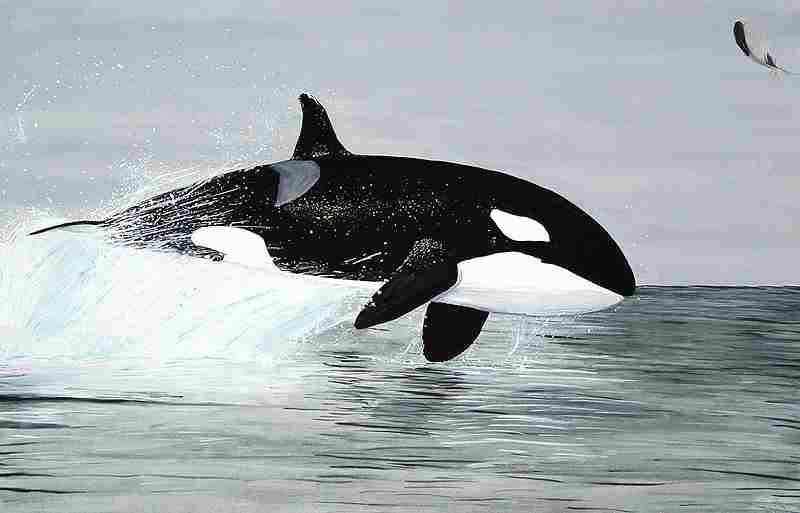
* Bald Eagle
The bald eagle (Haliaeetus leucocephalus) is a magnificent quaternary consumer found in North America. These birds of prey primarily feed on fish, swooping down from the sky to snatch their prey with their sharp talons. Bald eagles are often associated with coastal areas and large bodies of water, where they can find an abundant supply of fish.
* Harpy Eagle
The harpy eagle (Harpia harpyja) is one of the largest and most powerful eagles in the world, making it a formidable quaternary consumer. These birds of prey are found in tropical rainforests in Central and South America. Harpy eagles primarily feed on tree-dwelling mammals such as sloths and monkeys, using their strong talons to capture and carry their prey.
* Emerald Tree Boa
The emerald tree boa (Corallus caninus) is a quaternary consumer found in the rainforests of South America. These non-venomous snakes are known for their vibrant green coloration and arboreal lifestyle. Emerald tree boas primarily feed on small mammals, birds, and lizards, using their powerful constriction to subdue their prey.
* Polar Bear
The polar bear (Ursus maritimus) is a quaternary consumer adapted to the harsh Arctic environment. These magnificent creatures primarily feed on seals, relying on their hunting skills and excellent swimming abilities to survive in icy habitats. Polar bears are highly dependent on sea ice for hunting and are considered a vulnerable species due to climate change and habitat loss.
* Golden Eagle
The golden eagle (Aquila chrysaetos) is a powerful quaternary consumer found in mountainous regions across the Northern Hemisphere. These birds of prey have a varied diet, feeding on small mammals, birds, and even carrion. Golden eagles are known for their impressive hunting skills and can be found in habitats such as open grasslands, tundra, and alpine areas.
* Saltwater Crocodile
The saltwater crocodile (Crocodylus porosus) is the largest living reptile and a formidable quaternary consumer. These apex predators are found in coastal habitats throughout Southeast Asia, Australia, and the Pacific Islands. Saltwater crocodiles have a diverse diet, feeding on fish, birds, mammals, and even other crocodiles. They are known for their powerful jaws and ability to ambush their prey.
* Humans
Humans can also be considered quaternary consumers in certain ecosystems. While our dietary choices vary, humans have the ability to consume animals that are tertiary consumers, such as large predatory fish or carnivorous mammals. In some cases, humans may also consume herbivores, making them quaternary consumers in those specific food chains.
These examples reveal the diversity of quaternary consumers and their adaptations to different habitats. From bears in forests to eagles in the sky and crocodiles in coastal areas, each organism plays a vital role in maintaining their respective ecosystems.
What do Quaternary Consumers Eat?
Quaternary consumers feed on all animals below them in the trophic hierarchy; including herbivores (primary consumers), carnivores and omnivores (secondary, tertiary consumers).
* Herbivores
Herbivores are primary consumers that feed solely on plants. They obtain their energy by consuming vegetation such as grass, leaves, fruits, and seeds. Quaternary consumers, such as eagles, can prey on herbivores like jackrabbits. By hunting and consuming herbivores, quaternary consumers indirectly obtain energy from the plants that the herbivores have consumed.
* Carnivores and Omnivores
Carnivores are secondary consumers that primarily feed on other animals. They obtain their energy by consuming the flesh of other animals. Omnivores, on the other hand, have a more varied diet and consume both plants and animals.
Quaternary consumers can prey on both carnivores and omnivores, depending on the specific ecosystem. For example, an eagle may prey on a carnivorous bird or a small mammal like a squirrel.
By consuming herbivores, carnivores, and omnivores, quaternary consumers obtain the energy and nutrients they need to survive. This energy transfer occurs through the food chain, with each level of consumer passing on a portion of the energy they have obtained from their prey.
It’s important to note that the specific diet of a quaternary consumer can vary depending on factors such as its habitat, geographical location, and available prey. For example, a quaternary consumer in a forest ecosystem may primarily feed on herbivores such as deer or rabbits, while a quaternary consumer in a marine ecosystem may feed on carnivorous fish or marine mammals.
The diet of quaternary consumers also reflects the overall balance and health of an ecosystem. If the population of herbivores decreases, it can have a cascading effect on the entire food chain, including the quaternary consumers. Therefore, the presence and abundance of quaternary consumers are often indicators of a healthy and functioning ecosystem.
Additional elaboration is provided below;
1). Herbivores
Herbivores are one of the primary sources of food for quaternary consumers. These animals help in the transfer of energy through the food chain. Herbivores obtain their energy by consuming vegetation such as grass, leaves, fruits, and seeds. They are the first level of consumers in the trophic hierarchy.
Quaternary consumers, such as eagles, can prey on herbivores like jackrabbits. This interaction between the quaternary consumer and the herbivore is an essential part of the ecosystem’s balance. By hunting and consuming herbivores, quaternary consumers indirectly obtain energy from the plants that the herbivores have consumed.
The relationship between quaternary consumers and herbivores is a prime example of the interconnectedness of species within an ecosystem. The energy transfer from plants to herbivores and then to quaternary consumers highlights the intricate web of life.
* Eagles, as quaternary consumers, rely on the energy stored in the bodies of herbivores like jackrabbits. By preying on these herbivores, eagles obtain the necessary nutrients and energy to survive. This energy transfer is crucial for the overall functioning of the ecosystem.
* Jackrabbits, as herbivores, play a vital role in controlling plant populations. By consuming vegetation, they help maintain the balance between plants and their environment. Additionally, they provide a food source for quaternary consumers, ensuring the flow of energy through the food chain.
The specific diet of quaternary consumers can vary depending on their habitat and available prey. In different ecosystems, quaternary consumers may feed on various herbivores, such as deer, rabbits, or other plant-eating animals. This diversity in diet reflects the adaptability and versatility of quaternary consumers in different environments.
2). Carnivores and Omnivores
Quaternary consumers can also prey upon carnivores and omnivores, which include secondary and tertiary consumers. This interaction between quaternary consumers and these lower-level consumers is essential for maintaining the balance and energy flow within an ecosystem. Some instances of quaternary consumers preying on carnivores and omnivores are given below:
* One example of this predator-prey relationship is the orca preying on the great white shark. Orcas, also known as killer whales, are formidable quaternary consumers that have been observed hunting and feeding on great white sharks. Despite the great white shark’s reputation as a top predator, it is not immune to predation by these intelligent and powerful marine mammals. This interaction highlights the dynamic nature of the food chain and the adaptability of quaternary consumers in their pursuit of energy.
* Another instance is the bear preying on the fox. Bears, as quaternary consumers, have a diverse diet that includes both plant matter and animal prey. While they are primarily omnivorous, bears have been known to hunt and consume smaller carnivores like foxes. This predation serves as a reminder that quaternary consumers are not limited to a specific type of prey and can adapt their feeding habits based on the availability of resources in their environment.
These examples demonstrate the complex and interconnected relationships within ecosystems. Quaternary consumers, with their ability to prey upon carnivores and omnivores, contribute to the regulation of populations and the transfer of energy through the food chain. By consuming these lower-level consumers, quaternary consumers ensure the efficient utilization of energy and resources within the ecosystem.
FAQs
1. What is the definition of a Quaternary Consumer?
A quaternary consumer is an organism that occupies the fifth trophic level in a food chain or food web. These consumers are at the top of the energy pyramid and are often referred to as apex predators. They are typically carnivorous or omnivorous and feed on other consumers, including tertiary consumers.
Examples of quaternary consumers include advanced predators such as lions, tigers, sharks, and eagles. These animals rely on the energy obtained from consuming other animals to survive and thrive. They are characterized by their ability to hunt and capture prey, often using specialized adaptations such as sharp teeth, claws, or keen eyesight.
2. What are Secondary and Quaternary Consumers?
At the third and fourth levels of the food chain, we find secondary and quaternary consumers.
Secondary consumers, also known as carnivores, are organisms that primarily feed on herbivores. They are located one level above the herbivores in the food chain. Examples of secondary consumers include wolves, snakes, and hawks. These animals rely on the energy obtained from consuming herbivores to survive.
Moving up the food chain, we reach the quaternary consumers. Quaternary consumers are organisms that feed on other consumers, including tertiary consumers. They occupy the fifth trophic level and are often referred to as apex predators. Examples of quaternary consumers include lions, tigers, sharks, and eagles. These animals are at the top of the energy pyramid and play a crucial role in regulating the populations of other organisms in the ecosystem.
3. What is a Quaternary Consumer for Kids?
A quaternary consumer is an animal that occupies the highest level of the food chain and feeds on other animals, but is not eaten by any other animal(s). This means that they are at the top of the energy pyramid and play a crucial role in maintaining the balance of the ecosystem.
For kids, understanding the concept of a quaternary consumer can be simplified by using examples from nature. One example is the eagle. Eagles are quaternary consumers because they feed on other animals like fish, rabbits, and small mammals, but they are not preyed upon by any other animals. Another example is the shark, which feeds on smaller fish and marine mammals, but is not a food source for any other animal.
Quaternary consumers are often referred to as apex predators because they have no natural predators themselves. They have adapted to be efficient hunters and have specialized characteristics that allow them to thrive in their respective habitats.
4. What is a Fourth Consumer?
A fourth consumer, also known as a quaternary consumer, is an animal that occupies the highest level of the food chain and feeds on other animals, but is not preyed upon by any other animal(s). They are at the top of the energy pyramid and play a crucial role in maintaining the balance of the ecosystem.
Similar to tertiary consumers, fourth consumers are carnivores or omnivores that primarily feed on other animals. However, what sets them apart is that they are not consumed by any other animal in the food chain. This means that they have no natural predators themselves.
Examples of fourth consumers include animals like eagles, sharks, and lions. These apex predators have adapted to be efficient hunters and have specialized characteristics that allow them to thrive in their respective habitats. They have the ability to hunt and consume animals from lower trophic levels, such as herbivores, primary consumers, and even tertiary consumers.
By occupying the highest level of the food chain, fourth consumers help regulate the populations of other animals and maintain the overall health and stability of the ecosystem. They play a vital role in controlling the population sizes of lower trophic levels and preventing overgrazing or overpopulation.
5. Are Humans Quaternary Consumers?
Humans, as a species, can be considered quaternary consumers. They have the ability to prey on all other animals, including tertiary consumers. This means that humans occupy the highest level of the food chain and play a significant role in the ecosystem.
As omnivores, humans have a diverse diet that includes both plant-based foods and animal products. This allows them to consume animals from lower trophic levels, such as herbivores and primary consumers, as well as tertiary consumers. Humans have the capability to hunt, fish, and farm animals for food, making them versatile predators.
However, it is important to note that not all humans are quaternary consumers in their dietary habits. Some individuals may follow a vegetarian or vegan lifestyle, which excludes the consumption of animal products. In these cases, their diet would primarily consist of plant-based foods, making them lower-level consumers in the food chain.
6. Are Quaternary Consumers Apex Predators?
Quaternary consumers can be considered apex predators in many ecosystems. Apex predators are those at the top of the food chain and have no natural predators themselves. They play a crucial role in regulating the population of other organisms in the ecosystem.
Quaternary consumers, also known as top-level consumers, feed on tertiary consumers, which in turn feed on secondary consumers and so on. They are typically large carnivores that have the ability to hunt and consume other animals. Examples of quaternary consumers include wolves, lions, sharks, and eagles.
As apex predators, quaternary consumers have a significant impact on the structure and dynamics of their ecosystems. They help control the population of lower-level consumers, preventing them from becoming overpopulated and causing imbalances in the ecosystem. By regulating the population of their prey, quaternary consumers contribute to the overall stability and health of the ecosystem.
However, it is important to note that not all quaternary consumer species are apex predators. Some ecosystems may have multiple top-level predators, each occupying a different niche and feeding on different prey. In these cases, the term “apex predator” may be used to refer to the highest-level predator in a specific food chain or trophic level.
7. Is a Fox a Quaternary Consumer?
A fox is not typically considered a quaternary consumer. Quaternary consumers are usually large carnivores that feed on tertiary consumers. While foxes are carnivores, they are generally classified as secondary or tertiary consumers in most habitats.
They primarily feed on small mammals, birds, and insects, which are lower on the food chain. However, it’s important to note that the classification of a fox as a consumer can vary depending on the specific ecosystem and its biotic components.
8. What are 5 examples of quaternary consumers?
Five examples of quaternary consumers include the tiger, orca, harpy eagle, saltwater crocodile, and humans. These organisms occupy the topmost level of the food chain and help in maintaining the balance of ecosystems.
The tiger, known for its strength and agility, is a quaternary consumer found in various habitats such as forests and grasslands. It preys on herbivores like deer and wild boar, which are secondary and tertiary consumers.
The orca, also known as the killer whale, is a formidable predator found in oceans around the world. It feeds on marine mammals like seals and sea lions, which are tertiary consumers. Orcas are known for their intelligence and complex social structures.
The harpy eagle is a majestic bird of prey found in the rainforests of Central and South America. It primarily feeds on small mammals like monkeys and sloths, which are tertiary consumers. With its powerful talons and keen eyesight, the harpy eagle is an apex predator in its habitat.
The saltwater crocodile is the largest living reptile and a quaternary consumer in aquatic ecosystems. It preys on a variety of animals, including fish, birds, and even other crocodiles. With its powerful jaws and stealthy hunting techniques, the saltwater crocodile is a top predator in its environment.
Lastly, humans can also be considered quaternary consumers in certain scenarios. While we primarily consume food from lower trophic levels, such as plants and animals, there are instances where humans consume organisms higher up the food chain, such as predatory fish or game animals.
These examples highlight the diversity of quaternary consumers and their important role in maintaining the stab of ecosystems.
9. What is an Example of a 4th Level Consumer?
An example of a 4th level consumer is the leopard in the savanna ecosystem. As a top predator, the leopard occupies the fourth trophic level in the food chain. It feeds on herbivores like antelopes and zebras, which are primary consumers. The leopard’s position as a 4th level consumer highlights its role in regulating the population of herbivores and maintaining the balance of the ecosystem.
Leopards are known for their stealth and agility, allowing them to effectively hunt and capture their prey. They are solitary animals and have adapted to various habitats, including grasslands, forests, and mountains. With their sharp claws and powerful jaws, leopards are well-equipped to thrive as apex predators in their environment.
The example of the leopard as a 4th level consumer demonstrates the intricate relationships and energy flow within ecosystems. It emphasizes the importance of each trophic level in sustaining the biotic processes of the ecosystem.
10. How Much Energy Does a Quaternary Consumer Get?
A quaternary consumer receives a relatively small amount of energy compared to the total energy produced by producers through photosynthesis. According to the ten percent rule, there is an energy loss of about ten percent at each transition point from one trophic level to the next. This means that only a fraction of the energy from the previous trophic level is passed on to the next level.
As a result, a quaternary consumer typically receives approximately one-ten-thousandth or 1/10^4 of the energy produced by the producers. This significant decrease in energy is due to the cumulative energy losses that occur as energy is transferred through the food chain.
The ten percent rule highlights the inefficiency of energy transfer between trophic levels. It demonstrates that as energy moves up the food chain, there is a diminishing amount available for higher-level consumers. This limited energy availability at the quaternary consumer level is one of the reasons why there are fewer organisms at higher trophic levels compared to lower levels.
11. What is a food chain that ends in a quaternary consumer?
A food chain that ends in a quaternary consumer is a five-level food chain, usually found in robust ecosystems like rainforests.
12. Is an Eagle a Quaternary Consumer?
In certain ecosystems, an eagle can indeed be classified as a quaternary consumer. The classification of an eagle as a quaternary consumer is subjective and depends on the specific food chain it is a part of.
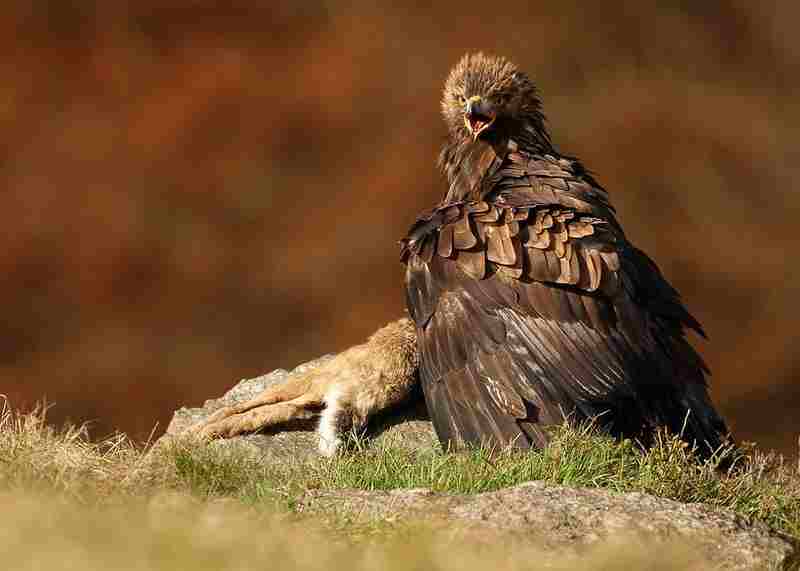
Quaternary consumers are organisms that occupy the highest trophic level in a food chain or web. They feed on tertiary consumers, which in turn feed on secondary consumers, and so on. Eagles, being predatory birds, mainly feed on primary and secondary consumers.
In a food chain that includes eagles, they would typically be considered tertiary consumers, as they feed on secondary consumers like rodents or small birds. However, in more complex and diverse ecosystems, where there are additional levels and high diversity of consumers, eagles can occupy the quaternary consumer position.
For example, in a five-level food chain found in robust ecosystems like rainforests, an eagle could be classified as a quaternary consumer. In this scenario, the eagle would feed on tertiary consumers such as snakes or other large birds, which themselves feed on secondary consumers like rodents or insects.


